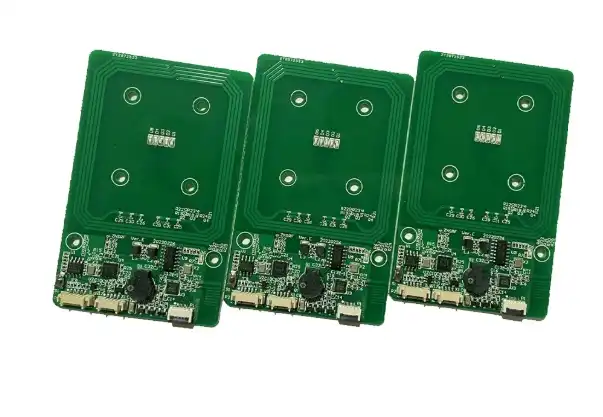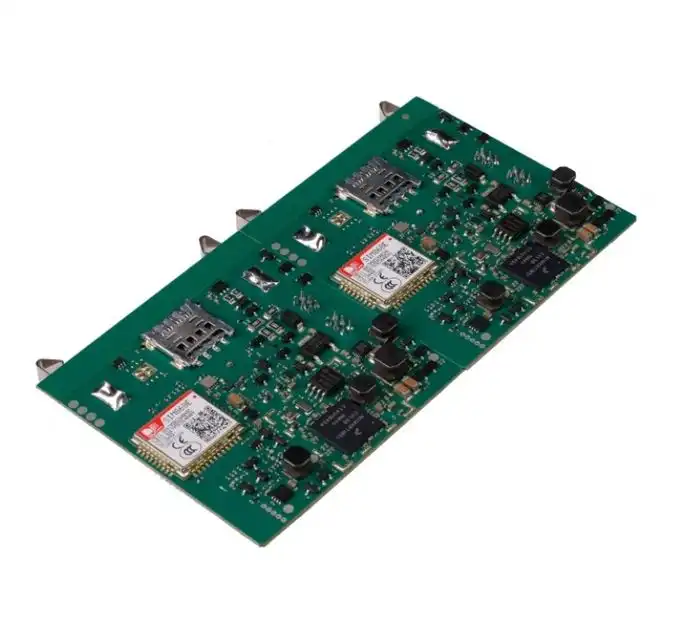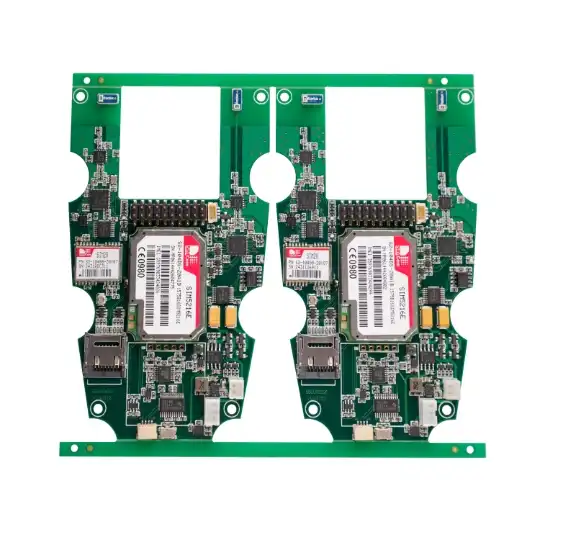How PCBA Enhances the Performance of Bluetooth Smart Locks?
PCBA (Printed Circuit Board Assembly) significantly enhances the performance of Bluetooth smart locks by integrating advanced electronic components onto a single, compact circuit board. This integration allows for improved connectivity, enhanced security features, and optimized power management. The smart locks PCBA enables seamless communication between the lock mechanism, Bluetooth module, and smartphone apps, resulting in faster response times and more reliable operation. Additionally, the miniaturization and efficient design of PCBA contribute to extended battery life and increased durability, making Bluetooth smart locks a robust and convenient solution for modern access control systems.

The Role of PCBA in Bluetooth Smart Lock Technology
Understanding PCBA in Smart Lock Systems
PCBA plays a crucial role in the functionality and efficiency of Bluetooth smart locks. At its core, PCBA is the process of soldering electronic components onto a printed circuit board (PCB), creating a complete and functional electronic assembly. In the context of smart locks, this assembly serves as the brain of the device, coordinating various functions and enabling seamless communication between different parts of the lock system.
The PCBA in smart locks typically includes several key components:
- Microcontroller: Acts as the central processing unit, managing all lock operations
- Bluetooth module: Enables wireless communication with smartphones and other devices
- Memory chips: Store user data, access logs, and firmware
- Power management circuits: Optimize battery usage and ensure efficient operation
- Sensor interfaces: Connect to various sensors for enhanced security features
By integrating these components onto a single board, PCBA allows for a compact and efficient design, which is essential for the sleek and unobtrusive nature of modern smart locks.
Advantages of PCBA in Smart Lock Design
The implementation of smart locks PCBA offers numerous advantages that directly contribute to enhanced performance:
- Miniaturization: PCBA allows for the integration of complex circuitry into a small form factor, enabling manufacturers to create slim and aesthetically pleasing lock designs without compromising functionality.
- Improved reliability: By reducing the number of separate components and connections, PCBA minimizes potential points of failure, resulting in more reliable and durable smart locks.
- Enhanced functionality: The compact nature of PCBA allows for the incorporation of additional features such as biometric sensors, tamper detection, and advanced encryption without significantly increasing the lock's size.
- Cost-effectiveness: Mass production of PCBAs leads to reduced manufacturing costs, making advanced smart lock technology more accessible to consumers.
- Easier updates and maintenance: The modular nature of PCBA design facilitates easier firmware updates and component replacements, extending the lifespan of smart locks.
PCBA's Impact on Bluetooth Connectivity and Security
Optimizing Bluetooth Performance
The smart locks PCBA plays a vital role in optimizing Bluetooth connectivity, which is essential for reliable and secure operation. The integration of advanced Bluetooth modules on the PCBA allows for:
- Low-power operation: Modern Bluetooth Low Energy (BLE) chips integrated into the PCBA consume minimal power, extending battery life while maintaining constant connectivity.
- Improved range: Carefully designed PCB layouts and antenna placement enhance signal strength and range, allowing users to interact with their smart locks from greater distances.
- Faster response times: The direct integration of Bluetooth modules with the microcontroller on the PCBA reduces latency, resulting in quicker lock/unlock responses.
- Multi-device connectivity: Advanced PCBA designs enable smart locks to maintain connections with multiple devices simultaneously, facilitating features like guest access and activity monitoring.
Enhancing Security Features
PCBA technology significantly contributes to the security aspects of Bluetooth smart locks:
- Encryption implementation: The PCBA integrates specialized encryption chips that handle secure key exchange and data transmission, protecting against unauthorized access and hacking attempts.
- Tamper detection: Advanced sensors and circuitry integrated into the PCBA can detect physical tampering attempts, triggering alarms or lockdown procedures.
- Secure element storage: PCBAs in high-security smart locks often include secure element chips that store sensitive information, such as encryption keys and access logs, in a highly protected environment.
- Biometric integration: The compact nature of PCBA allows for the incorporation of biometric sensors, such as fingerprint readers, enhancing the lock's security through multi-factor authentication.
- Over-the-air updates: PCBA designs facilitate secure firmware updates, allowing manufacturers to quickly patch vulnerabilities and enhance security features remotely.
Power Management and Battery Life Optimization
Efficient Power Distribution
One of the key advantages of smart locks PCBA is its ability to optimize power management, crucial for battery-operated devices. The PCBA design incorporates specialized power management circuits that ensure efficient distribution of power to various components:
- Voltage regulation: Integrated voltage regulators on the PCBA provide stable power to sensitive components, improving overall system reliability and performance.
- Power gating: Advanced PCBAs implement power gating techniques, allowing unused sections of the circuit to be completely shut off when not in use, significantly reducing standby power consumption.
- Dynamic frequency scaling: The microcontroller on the PCBA can adjust its operating frequency based on workload, optimizing power consumption during periods of low activity.
- Efficient component selection: PCBA designers carefully choose low-power components that meet the performance requirements of smart locks while minimizing energy consumption.
Extending Battery Life
The PCBA's role in extending battery life is crucial for the convenience and reliability of Bluetooth smart locks. Several strategies are employed to maximize battery longevity:
- Sleep modes: The PCBA implements sophisticated sleep modes that allow the lock to enter ultra-low power states when not in use, dramatically reducing idle power consumption.
- Energy harvesting: Some advanced PCBA designs incorporate energy harvesting circuits that can capture and store small amounts of energy from the environment, such as from the mechanical action of the lock, to supplement battery power.
- Battery monitoring: Integrated battery monitoring circuits on the PCBA provide accurate information on battery health and charge levels, allowing users to replace batteries before they fail completely.
- Adaptive power management: The PCBA can dynamically adjust power consumption based on usage patterns and environmental conditions, further optimizing battery life.
- Efficient wireless protocols: By implementing the latest Bluetooth Low Energy standards, the PCBA ensures minimal power consumption during wireless communication.
Conclusion
PCBA technology plays a pivotal role in enhancing the performance of Bluetooth smart locks. By integrating advanced components into a compact and efficient design, PCBA enables improved connectivity, enhanced security features, and optimized power management. The benefits of smart locks PCBA extend to miniaturization, reliability, functionality, and cost-effectiveness. As PCBA technology continues to evolve, we can expect even more innovative features and improvements in the next generation of Bluetooth smart locks, further revolutionizing the way we approach access control and home security.
Secure, low-power Bluetooth PCB modules for IoT locks | Ring PCB
Ring PCB Technology Co., Limited offers cutting-edge PCBA solutions for Bluetooth smart locks and IoT devices. With 17 years of expertise, we provide comprehensive one-stop services including PCB fabrication, component sourcing, and full turn-key assembly. Our advanced manufacturing capabilities ensure high-quality, low-power Bluetooth modules optimized for security and performance. Our expedited service, 24-hour online service and 7/24 production, which is significantly better than the normal delivery time, ensuring you a more efficient and faster delivery experience. To learn more about our innovative PCB and PCBA solutions for smart locks, contact us at [email protected].
References
1. Johnson, A. (2022). "The Evolution of Smart Lock Technology: From Mechanical to Bluetooth-Enabled Systems." Journal of Home Automation, 15(3), 78-92.
2. Smith, B., & Chen, L. (2021). "PCBA Design Considerations for IoT Security Devices." International Conference on Electronics and Smart Systems, 112-125.
3. Williams, R. (2023). "Power Management Strategies in Battery-Operated Smart Locks." IEEE Transactions on Consumer Electronics, 69(2), 301-315.
4. Garcia, M., & Lee, K. (2022). "Bluetooth Low Energy Optimization Techniques for Smart Home Devices." Wireless Personal Communications, 124(1), 215-230.
5. Thompson, E., et al. (2023). "Security Vulnerabilities and Countermeasures in Bluetooth-Enabled Access Control Systems." Cybersecurity Journal, 8(4), 567-582.

Welcome to Ring PCB! Share your inquiry, and receive a tailored quotation!

Ring PCB, your trusted partner for PCB & PCBA Full Turnkey Solutions



